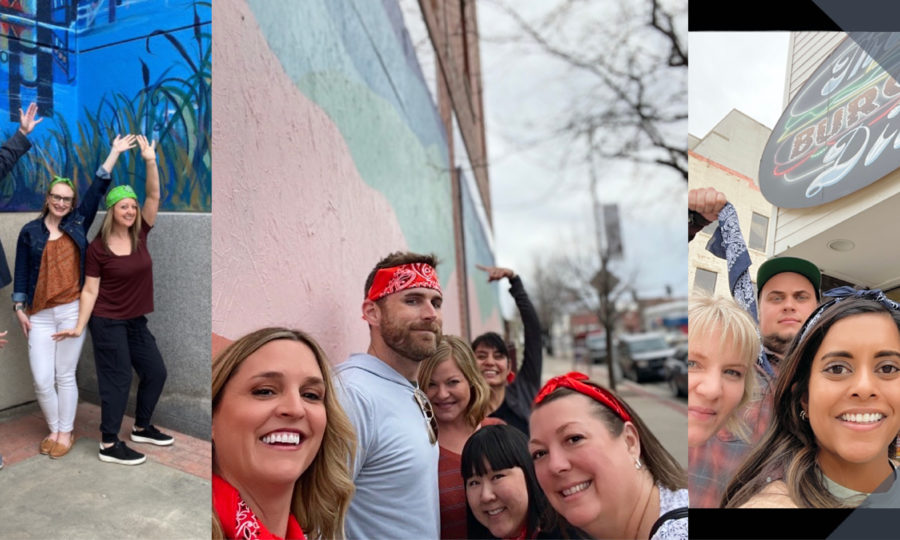Crisis PR: Prepare for the Worst to Avoid It
Today’s Tone & Tenor in Crisis PR
Since founding Kinetic in 2007, Dana Pulis has seen her share of crisis PR situations. Those experiences have helped her develop the instincts to sense potential looming issues and the intuition for how best to quickly defuse them. Today’s post-pandemic, polarized climate is unlike any she has experienced.
“I’ve been involved in a lot of crisis PR work for clients lately,” said Dana. “That’s not surprising given the tone and tenor of the world lately. People are running hot and situations that may have been more civil at one point are quickly escalating to full-blown PR situations for our clients.”
While the climate may be primed for thorny PR situations, nothing has changed in terms of how businesses need to prepare for inevitable blowups, large and small. Dana stresses that the businesses that successfully weather such PR storms most often have a plan in place before disaster hits. This preparation goes a long way toward mitigating the damage.
The Factor that Makes All the Difference
“Over the last 18 months, we’ve been involved in very public situations that require far more than a press release to navigate,” said Dana. “Some have required more extensive reputation management, community management on social media and delicate, sophisticated strategies to minimize the impact of these unexpected situations.”
The common theme for each of these client “fires” was an unexpected, unforeseen public situation that was potentially damaging to the business or organization. Some had a crisis PR plan in place while others did not.

“The outcome for these clients varied,” said Dana. “But a critical determining factor for success was our ability to develop a response quickly. That ability was based largely on whether the groundwork had already been laid for such a situation. And hours or days means the difference between success and failure.”
Recently, Kinetic was called to help a business through a social media crisis that we had to turn down on the spot because with no plan, no relationship with the potential client and no formative work done, we couldn’t work effectively. The business closed because of this unforeseen, and ultimately devastating, event. If this business had a developed plan and a relationship with a PR firm, the likelihood of their success would have been dramatically increased.
Don’t have a crisis management plan? Our team of experts can help. Contact us today.
Case Study: What Not To Do!
So what does that groundwork and planning look like? How can your business prepare now? Let’s analyze a crisis PR failure to explore how you can set your business up for success.
Remember the explosion of the Deepwater Horizon drilling rig that killed 11 men and coated Gulf Coast beaches with oil in 2010 (and the 2016 movie of the tragedy starring Mark Wahlberg)? The event itself was an environmental and human disaster of epic proportions. But British Petroleum (BP) compounded the damage with a completely botched PR response. The company leadership utterly failed in keeping the public informed and managing the messaging.
Their response was delayed, leaving the media to frame the narrative. When BP’s response did come, they failed to take full responsibility and never developed a consistent message. The final blow came weeks after the catastrophe hit when CEO Tony Hayward lamented to reporters that he hadn’t had a day off for weeks. “There’s no one who wants this thing over more than I do,” said Hayward. “You know, I’d like my life back.”
Tell that to the widows and residents of the Gulf Coast who lost their livelihood. It was a damaging, self-inflicted public-relations black eye brought on by fatigue and off-the-cuff comments. In an instant, Hayward solidified the public impression and media narrative that the company leadership just wanted to move on and return to their comfortable lives.
Crisis Hits: What You Should Do
Business leaders can learn a lot from the BP disaster. Aside from following the steps below to prepare, Dana has this advice for business leaders in the unfortunate event of a PR crisis.
“First and foremost, face the issue head-on and tell the truth from the start,” said Dana. “Trying to cover up, obfuscate or hide the truth will always backfire. Be honest and out front, even if it means admitting mistakes. There are no chances for PR do-overs.”
Tips To Avoid Making Things Worse During a PR Crisis
Let’s hope your business or organization never has to enter the crisis communication vortex. It is fraught with PR peril. If you do find yourself in the middle of an unfortunate event, here are some tips to avoid making things worse.
Plan for a crisis. Make a plan you never want to use. Make it when you can devote time and careful consideration – not when a crisis hits.
Provide a timely response. Online news media, Facebook, Instagram, Twitter and other social media will have the story out right away. Time is of the essence to shape public opinion. Silence in a crisis suggests you have something to hide or you’ve done something wrong.
Never make one statement to the public and another to employees. All should hear the same consistent message. Remember, an employee may post your statement on social media for all to see.
Identify a spokesperson. Is it you? Don’t wing it. Read prepared statements ahead of time with your inner cynic engaged. Have several colleagues review it and ask, what could go wrong with this? Some “holding statements” could be prepared ahead of time, such as “Our emergency team has responded, and we will be supplying additional information when it is available and posting it on our website.”
Make a list of the 10 worst things that could happen. Involve all employees. It’ll cost a bit to make a plan – and a whole lot more if a crisis hits and you have no plan. Different groups should brainstorm: the executive team and employees in all departments. The overall plan should include your outline for a communication strategy.
Set policy for what you can say, who says it, how you get the messages out and who gets the messages. As part of their plan, many companies set up a calling tree, with no more than two calls assigned to each person.
Identify stakeholders to whom you will communicate. Internal audience, external audience of customers, vendors, community leaders and media representatives. Create a list of names, emails and phone numbers.
Plan for situations when you need additional support if the phones, email, and social media blow up. You need to join the discussion and stay on message. Don’t ignore the frenzy and think it will go away.
If you are not in a position to answer questions from the media, just say so. Tell reporters that when you have information you can share, you will. Keep news releases short and to the point. As media reports emerge, monitor them closely. If the media gets it wrong, whether the reporters talked to you or not, call to demand a correction.
Do a post-mortem when the dust settles. What could you have done better? Revise your crisis communication plan as necessary.
Want help crafting a crisis PR plan before you need one? Is your reputation suddenly on the line? Kinetic has the tools, strategies, and experience you need when it matters most. Contact us today!




